
A Teacher's Guide to Collaborative Family-Teacher Relationships
Teachers | Virtual Learning | Communication
I moved a lot with my multi-cultural family as a kid. If you know me, you know this because I talk about it often. And this experience significantly impacted the way I view the world: I know what it means to be both a guest and a host, to speak the regional tongue fluently and not at all. If you’ve had a similar experience, then you know that it shapes you. I have seen my parents (and by extension, myself) be both locals and foreigners all in one day. These experiences have given me the gift of empathy.
As a teacher, I was fortunate to work in a community with which I identified. I shared the Spanish language with families in the community I taught in and was also fluent in English. This experience made it easier for me to navigate the school system. Through this experience, I learned about how complex our education system can be for immigrant families. There are many things that we, as educators, accept as normal. Take, for instance, the school year starting in the fall, which is an American tradition. I worked with many immigrant families from countries where the school year mirrors the calendar year...because why wouldn’t you start a school year at the beginning of the year? Some communities call elementary schools grammar schools, while in my mother’s native El Salvador, we call high school bachillerato, where you typically specialize in an area of expertise. And these are the simple things! Try to explain boards of education or universal enrollment to someone new to our country!
The reality is that we have a responsibility as educators to help families navigate our complex systems, regardless of where they come from. The following are recommendations for teachers that I learned working in diverse communities that can benefit all families.
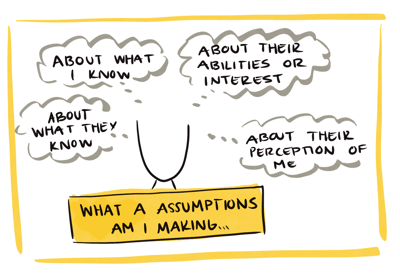 1. Monitor your assumptions
1. Monitor your assumptions
I recently facilitated a session for parents on behalf of a school district. I spoke through slides clarifying the many different initiatives the school district was tackling in the midst of the pandemic. The district leaders were so proud of the work they had accomplished to reopen schools virtually, and I was confident families would be supportive. I joined the group of Spanish speaking parents, and I opened it up for questions. I was a bit surprised that the most frequently asked questions were: “How do I register my child for school?” and” “Which school is my child supposed to attend?” The parents didn’t know if their school assignments had changed because of distance learning, and they didn’t know how to register their child without being in school. These are important tasks that were a pretty big miss because we assumed they were ready to talk about what happens once their child was “in” school.
Never assume that folks know how to navigate the system with which you are intimately familiar. Take extra steps to clarify processes or make sure you name the assumptions you are making. An example might be, “I’d like to talk about supporting your student with their homework. A few assumptions I am making are that you are familiar with logging onto the program we use, and you have 30-40 minutes a day to support your child. If these assumptions are not true for you, please reach out to me so we can discuss some alternatives.”
Alternatively, you might encounter a situation like the one I shared about registering students. In this instance, you can say, “Apologies, I think I made an assumption that we were ready to talk about X, but I’d like to pause here and clarify Y because that’s a great question.”
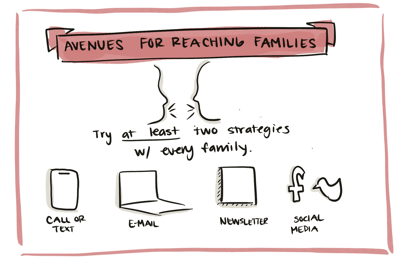 2. Create multiple ways to engage
2. Create multiple ways to engage
Just like our students, adults have different needs, and one way will not work for everyone. As a teacher, I remember feeling so overwhelmed at times that I would say, “Well, I sent an email about that, they should know. They need to X.” Really, I knew better than to assume that an email would suffice as family outreach, but I was so tired and didn’t want to add another task to the endless to-do list. I started getting creative by using texts with some families – particularly helpful when someone speaks a different language because you can type and then use Google Translate. I also tried calling directly, creating a group chat (GroupMe helps protect from sharing other people’s numbers), sending messages in student planners, and planning family events. All of these efforts led to unique relationships with each family and ultimately saved me time and frustration down the line because we were all on the same page. A robust engagement plan is a great way to increase transparency and the likelihood of a collaborative relationship between families and the school.
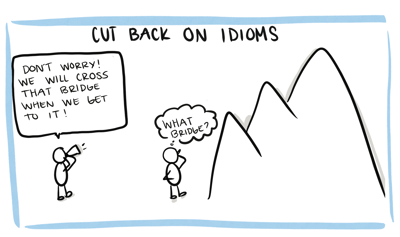 3. Avoid the use of idioms or colloquial language
3. Avoid the use of idioms or colloquial language
“We can cross that bridge when we get to it.” “Well, it’s six in one and half a dozen in the other.” “Can I piggyback on that?”
These are all sayings I hear weekly and often use myself. The challenge with idioms is that they don’t always translate to other languages or cultures. At best, they connect us by common cultural understandings but at worst, they can create confusion. Consider simplifying your communication, make sure to keep it literal, and ensure your tone matches the message you want to convey.
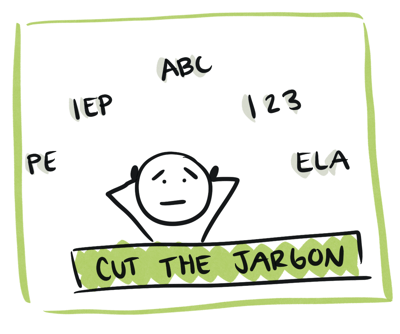 4. Limit jargon and acronyms
4. Limit jargon and acronyms
I recently went to a doctor’s appointment, where the physician recommended a series of tests. She used the scientific names for all of them. I was apprehensive about clarifying at the risk of sounding silly. I did find the courage, and it turned out that all of the tests were routine. I was so relieved. However, before I asked, my mind was gearing up for the worst!
Are we as educators that different from doctors with their patients? Imagine hearing “child study team,” “phonemic awareness,” or “number sense.” Without context, it sounds very similar to the battery of tests from my doctor. Instead, take these steps to make sure you are communicating clearly:
- Spell out any acronyms
- Develop a bank of terms for families and distribute them at the beginning of the year
- When using a new term, use the complete term to introduce the acronym. When possible, add a visual cue to help with recall of the term
- Simplify when possible. Describe the term or action rather than using the term itself
Note: If you are translating, it is always great to use a translation tool first but try to connect with a native speaker to double-check your communication as these tools create very literal translations, and some cultural terms will not translate (see: Avoid the use of idioms or colloquial language above)
5. Invite families to collaborate with you
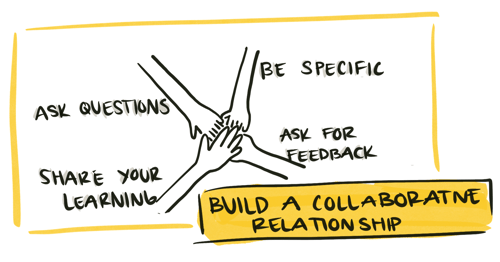
A mentor once told me, “You can be the expert in 2nd grade, but the parent is ALWAYS the expert in their child.” Sure, as a teacher, I might be more intimately familiar with the standards for a grade or what might be developmentally appropriate, but the parent knows their child best. Be sure to honor this expertise while also offering yours. It takes so many people to support a child. Try some of these tips to build a collaborative relationship with families:
- Ask questions: Don’t start conversations with your observations or your recommendations because it sets up the relationship to be one-sided where you provide, and the family simply receives and executes. The goal is to be curious in order to open up a discussion where both parties can contribute. Consider questions like:
- Getting to know you: When do you notice your child has the most energy? What does your child do when they are frustrated? What motivates your child? When is your child most open to help?
- Monitoring progress: Last time we talked about X, how is that going? You mentioned your child is frustrated with Y, can you tell me more about that?
- Be specific: Be clear with your observations and be sure not to add meaning to them. Instead of “Tomas loves to talk and is always distracting his friends.” you might say, “I have noticed that after lunch is a tough time for Tomas to concentrate. This looks like him talking to friends. Have you noticed this before, or has this been an observation from past teachers?” This is more important than ever because families are your eyes and ears during the school day.
- Share your learning: Right now, we are all learning something new, so it’s important to share with families where you are stretching and growing. This will allow for some grace for you, and it will model for them that it’s ok to try something and tweak it along the way.
- Ask for feedback: This is a tough one because you might not want to put yourself in a position to be criticized. I get it; teaching in a pandemic is exhausting enough. But feedback can be valuable to learning quickly, and if things don’t go as planned, it helps families share difficulties in order to move past them. You might consider a weekly or bi-weekly survey with the same questions each time.
- What worked for you/your child this week?
- What challenged you/your child this week?
- What resources were more helpful, and why?
- What do you need for next week?
As I think about the challenge ahead, I am reminded of a mantra I borrow from Brene Brown’s book Rising Strong, “Everyone is doing the best they can.” We are all trying to make the best of a challenging circumstance, and even if what we are doing is not THE best, remember that it is OUR best.
About Andrea Goetchius
Andrea Goetchius is an Associate Partner at Education Elements, working with schools and districts to best meet the needs of all learners. Andrea enjoys collaborating with and connecting clients across the country to leverage a community of innovation as schools embark on a personalized learning path. Andrea began her career as a Special Education Teacher in Glendale, Arizona. During her time in the classroom, she coached and supported student teachers and led staff development. Andrea then worked for Teach For America as a Manager of Teacher Leadership Development where she coached and supported teachers to match their strengths and skills with the needs of their students. She has coached in pre-school to twelfth-grade classrooms with a focus on implementing Culturally Responsive Pedagogy in the classroom. In her current role, Andrea specializes in projects that bring personalized learning to scale across districts, regional centers, and state entities. She is passionate about the development of innovative leaders.



